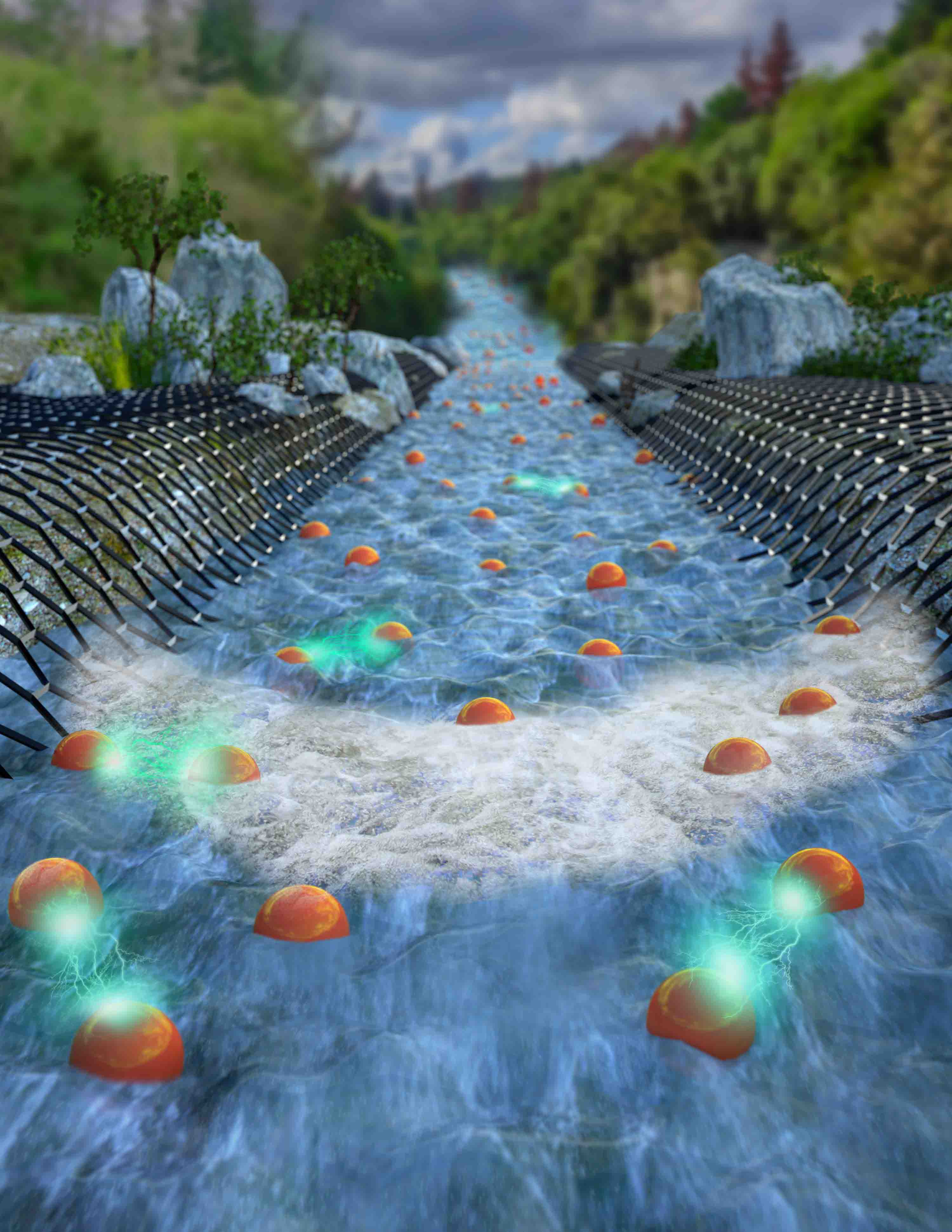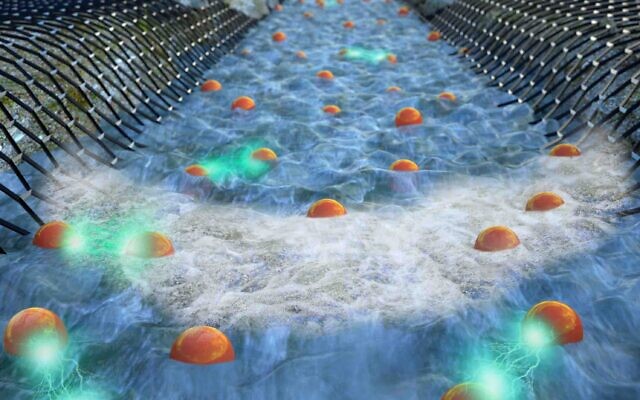Israeli scientists show how electrons ‘flow’ like water
Researchers at the Weizmann Institute heralded for using new material the thickness of an atom to make landmark discover
Israeli scientists have used a new material the thickness of an atom and an innovative new imaging system to show how electrons can “flow” like water.
The hydrodynamics of electrons – meaning how they move – has long been somewhat of a scientific mystery since the sub-atomic particles fly around faster than the human eye can observe.
Electrons are the tiny charged particles that orbit the nucleus of an atom, weighing almost 2,000 times less than each proton and neutron in the centre.
Electricity is essentially the exchange of electrons in a stream called a current through a conducting medium, so the movement of electrons is of great interest to technology firms, given society’s increasing reliance on electricity.
Although electrons are said to “flow through” materials, they do not normally move through conductors like a liquid, but rather, they tend to move more like a gas, bouncing off impurities and imperfections in the conductor.

However, scientists have suspected that a liquid-like hydrodynamic electron flow is possible, so researchers at the Weizmann Institute chose to check with the help of a unique technique to image electrons flowing similarly to water flowing through a pipe.
Their success, recorded in the journal Nature, is the first time such “liquid electron flow” has been visualised, with potential implications for future electronic devices.
To observe it they used graphene, a nano-material developed at the University of Manchester which is the thickness of one carbon atom, and which can be kept exceptionally clean.
Professor Shahal Ilani and the team at the Institute’s Condensed Matter Physics Department then imaged the electron flow by using a nanoscale detector built from a carbon nanotube transistor that can image the properties of flowing electrons with unprecedented sensitivity.
“Our technique is at least 1,000 times more sensitive than alternative methods; this enables us to image phenomena that previously could only be studied indirectly,” said Dr. Joseph Sulpizio from the Weizmann team.
The team created nanoscale “channels” designed to guide the flowing electrons, and saw the hallmark signature of hydrodynamic flow: just like water in a pipe, the electrons in the graphene flowed faster in the centre of the channels and slowed down at the walls.
Knowing that electrons can mimic the patterns of a conventional liquid may now impact the design of electronic devices, including those needing less power.
“Computing centres and consumer electronics are devouring an ever increasing amount of energy,” said Weizmann’s Dr Lior Ella. “It’s imperative to find ways to make electrons flow with less resistance.”

Thank you for helping to make Jewish News the leading source of news and opinion for the UK Jewish community. Today we're asking for your invaluable help to continue putting our community first in everything we do.
For as little as £5 a month you can help sustain the vital work we do in celebrating and standing up for Jewish life in Britain.
Jewish News holds our community together and keeps us connected. Like a synagogue, it’s where people turn to feel part of something bigger. It also proudly shows the rest of Britain the vibrancy and rich culture of modern Jewish life.
You can make a quick and easy one-off or monthly contribution of £5, £10, £20 or any other sum you’re comfortable with.
100% of your donation will help us continue celebrating our community, in all its dynamic diversity...
Engaging
Being a community platform means so much more than producing a newspaper and website. One of our proudest roles is media partnering with our invaluable charities to amplify the outstanding work they do to help us all.
Celebrating
There’s no shortage of oys in the world but Jewish News takes every opportunity to celebrate the joys too, through projects like Night of Heroes, 40 Under 40 and other compelling countdowns that make the community kvell with pride.
Pioneering
In the first collaboration between media outlets from different faiths, Jewish News worked with British Muslim TV and Church Times to produce a list of young activists leading the way on interfaith understanding.
Campaigning
Royal Mail issued a stamp honouring Holocaust hero Sir Nicholas Winton after a Jewish News campaign attracted more than 100,000 backers. Jewish Newsalso produces special editions of the paper highlighting pressing issues including mental health and Holocaust remembrance.
Easy access
In an age when news is readily accessible, Jewish News provides high-quality content free online and offline, removing any financial barriers to connecting people.
Voice of our community to wider society
The Jewish News team regularly appears on TV, radio and on the pages of the national press to comment on stories about the Jewish community. Easy access to the paper on the streets of London also means Jewish News provides an invaluable window into the community for the country at large.
We hope you agree all this is worth preserving.






















